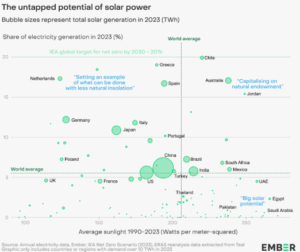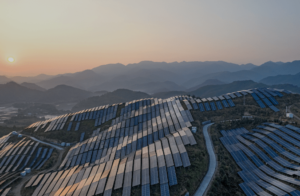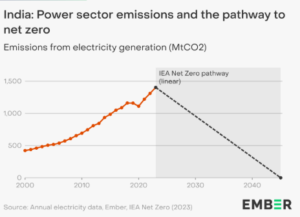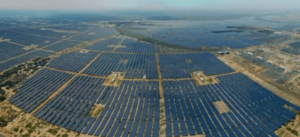India surpasses Japan in solar output: Ember report
According to a report published by international energy think tank Ember on Thursday, India has surpassed Japan to become the world’s third-highest solar power producer in 2023. The report titled The Global Electricity Review 2024 drew a comprehensive analysis of the global power landscape in 2023, with a special focus on the renewable power outputs of over 80 nations that account for 92% of global energy demand.
The report stated India generated 113 billion units (BU) of solar power in 2023, while Japan produced 110 BU. The growth in figures represents India’s transition into green energy sources but also highlights the gap between installed capacity and actual power production trends.

According to the government think tank Niti Ayog, among India’s total installed electricity of 442 GW, solar power made up only 6.66% of the total power output. Experts alleged Japan’s fall in ranking is largely due to fluctuations in power demand and local energy production rather than India’s growth in solar energy generation.
In terms of installed power capacity (renewable and non-renewable energy), India ranks fifth in the world at 73 gigawatts (1 GW = 1 billion watts), while Japan is in third place (83 GW). India’s remarkable growth in solar power production contributed 5.9% of the global energy output in 2023.
Despite the upward trend in solar energy production since 2015, India still relies on coal to meet the majority of the nation’s energy supply. It can be said for certain that until clean energy sources grow fast enough to meet India’s increasing energy demand, fossil fuel emissions will peak.

Currently, China (+156 TWh) and the USA (+33 TWh) remain at the number 1 and 2 positions in global solar energy generation, respectively.
A report urges nations to transition to green energy
Ember’s Asia Programme Director, Aditya Lolla, said, “Increasing clean electricity is not just for reducing carbon emissions in the power sector. It is also needed to meet the rising electricity demand in an increasingly-electrified economy and to decouple economic growth from emissions, which is crucial for tackling climate change.”
He also highlighted that in countries like India and Brazil that are slowly rising to meet global energy demands, there’s a stark difference between cumulative solar capacity and solar energy generation.

According to the IEA’s (International Energy Agency) “The Net Zero Emissions by 2050 Scenario” (NZE Scenario), global energy output from renewable energy sources needs to triple by the 2030s in order to have a meaningful change on climate change. During the CoP28 summit in 2023, several energy-producing nations agreed to cut down on their energy emissions while transitioning to green energy solutions.

Ember’s director of global insights, Dave Jones, attributed the remarkable growth in solar energy production trends observed in the past decades since the 2000’s to the scientific advancements in solar PV (photovoltaic cells) and increased battery capacity. Coupled with lost production and installation costs, solar is steadily overtaking global reliance on fossil fuels for energy production.
India’s share of solar power generation increased from 0.5% in 2015 to 5.8% in 2023, indicating a seventeen-fold increase in solar energy generation since 2015. As of 2023, solar has surpassed wind as the world’s fastest-growing source of renewable energy.
A surge in green energy production is imminent
Experts suggest that by 2050, 85% of the global energy demand will be powered by renewable energy sources like solar, wind, and hydro. With climate change becoming readily apparent over the years, countries must work together to build clean energy infrastructure, as they play a central role in climate change mitigation.

Alongside the strong growth in global energy demands, the world must undergo faster transitions into green energy solutions, all while limiting energy emissions from fossil fuels. Until clean energy production outpaces energy emissions, carbon release may peak for a few more years until a downward trend begins.












Comments 1